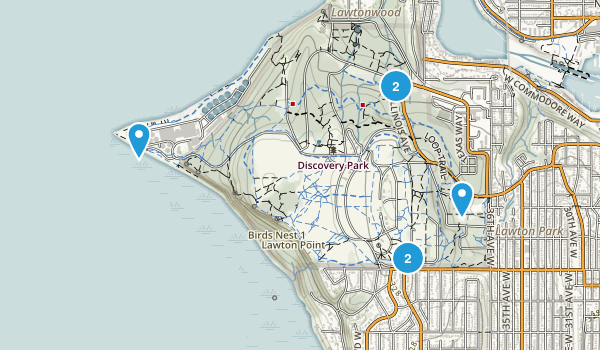
Most of the buildings were built at the turn of the century. Families with children under 8 or people over 62 can get permits too! Since Discovery Park used to be Fort Lawton, there are nine historic buildings from that time period. If you physically can not walk there, you can get a permit from the environmental learning center to drive to the beach where there are a few parking spots. It is a 1.5 mile walk to the beach from any of the three parking lots. The main goal should be the historic lighthouse that was built in 1881. A shorter choice would be one off the north parking lot, the � mile loop called the Wolf Tree Nature Trail where you find the largest collection of native plants. The most popular trail is the 2.8 mile Loop Trail which circles the park. There are more than seven miles of hiking trails in the park. Maintained in its semi-natural condition the park will continue to offer a biologically rich and diverse natural area for urban dwellers and an unmatched opportunity for environmental education. The city states The role of Discovery Park is to provide an open space of quiet and tranquility away from the stress and activity of the city, a sanctuary for wildlife, as well as an outdoor classroom for people to learn about the natural world. There are spectacular views throughout the park with a good amount of waterfront walking on both sides of West Point. Discovery Park is located on Magnolia Bluff overlooking Puget Sound.

It is the largest city park in Seattle, and occupies most of the former Fort Lawton site.

Discovery Park is a 534 acre natural area park operated by the Seattle Parks and Recreation.

Discovery Park has more to offer than many of the State Parks on Puget Sound.


 0 kommentar(er)
0 kommentar(er)
